The Exhaust
 And we thought that the Fulvia was tricky!
And we thought that the Fulvia was tricky!A 1925 supercharged 2-litre V12 GP Delage engine
The first word on this topic is: DIFFICULT
To begin with, the engine installation does not allow adequate space for the exhaust manifolding and from here on it doesn’t get any better!
The standard Fulvia manifold is a poor thing indeed. Its internal diameter at 32mm is too small; it has “blended” junctions which are not good, and it has very unequal length primaries. Matters are worse on the 1600 since the only difference is the fact that 1600 manifolds are made of stainless steel, presumably to cope with all the heat; I have seen them red hot. Incidentally, some of the replacement exhaust systems are even worse. At least the originals had proper bends. I have seen some systems where there is considerable necking at the curves; such systems are rubbish and should not be used - let alone sold; the original is already too restrictive.
Certain suppliers do offer special manifolds but I have never seen one I liked, all being more or less copies of the works ones that I have seen, which did not impress me either. Of course all offer a good improvement on the inadequate original, but they could be so much better! Whilst I was manager at Evolution Engineering in London, I organised the development of an improved manifold. At the time we had a customer who was fed up with the after market “Group IV” manifold fitted (!) to his car. It didn’t fit! I told him we could do a bit better, so we borrowed his manifold to get a basic idea of the layout and set out to produce a better one, in stainless steel. A considerable time was spent making a pattern which was then passed to a specialist company to manufacture. The enormous trouble I had with this is quite another story…
A stage in making the pattern, using a mocked-up engine and gearbox as a jig
In the end, the manifold was a success. As may be seen from the pictures, instead of blended junctions as used by the works, we incorporated collectors. It was fascinating to fit the first one to our customer’s car. The first thing we noticed was that the exhaust was quieter; I put this down to controlled expansion at the collectors. However, what gave the greatest pleasure was hearing the customer tell me about the substantial improvement in torque that the system provided, especially since this is precisely what I had forecast.
The Evolution Engineering Fulvia manifold (before the fabricators corrected the errors)
As an historical aside, some of you may remember the story of the (eventually) very successful Vanwall grand prix cars in the 1950s. They used an exhaust manifold that was pretty advanced for the time and observers remarked how quiet the cars were. The irascible Vanwall boss Tony Vandervell, loved to tease the Ferrari team with their Lancia-derived V8s, by 1957 a bit outdated. He pointed at the Ferrari exhaust pipes from which a colossal noise was emitted and joked, “That’s where your power’s going”!
When producing parts for after-market sales, one must consider the installation of the parts and so the Evolution Engineering manifold was designed to be a straightforward fit and to mate with the standard exhaust system. The enthusiast who is able to accept something more challenging in this regard has more freedom in choice of design. The picture below shows a home-made manifold that I know worked very well indeed. To fit it though, the head must be removed and the engine tilted slightly. It runs over rather than under, the left-hand driveshaft. The manifold was made by welding together numerous bends cut from spare or second-hand exhaust systems. The collectors were simple fabrications in sheet steel, whilst the flange was an original from a scrap manifold machined to accept larger primaries (35mm bore).
 A very effective home-made 4/2/1 exhaust manifold featuring long primaries
A very effective home-made 4/2/1 exhaust manifold featuring long primariesFinally in this section, a few observations about manifolds. If you decide to make or perhaps specify your own, remember that the aim is to have all the primaries, i.e. the pipes that lead from the ports, equal length – with respect to the exhaust valve, so the Fulvia’s unequal length ports must be allowed for in the design. Whilst I have a four-into-one manifold on my car, a 4-2-1 is really better (with primaries 1 & 4 and 2 & 3 being coupled together of course), both for tractability and for ease of fitting. Curves should be smooth and all bends must be mandrel bends with no “necking” so often seen on poor-quality replacement systems as I remarked above. The 2-into-1 section should be of such a length so that when added to the primary length, the total is the tuned length that is to be employed. For most Fulvias I suggest something between 28 and 36 inches (71 – 91 cm). A good compromise is to make the primaries about 16”(41cm) from the exhaust valve so that the second (2-into-1 section) should be between 12 and 20 inches (30 to 50 cm.) long excluding the length of the collectors. Collectors should be constructed with their sides at an included angle of around 14 degrees and it is essential that the pipes are cut off cleanly where they enter the collector – it is even better to have a tapering “tongue” that enters the collector but this is tricky to make). Internal diameter of the primaries should be 1 3/8” (35mm) and of the secondaries 1 1/2” (38mm). In a perfect world, the length of the single pipe which follows the 2-into-1 collector, should be the tuned length when it meets the silencer. This is usually impossible on a Fulvia for clearance reasons. Perfectionists could employ a small expansion chamber here… The internal diameter of the single pipe should be 2” (51mm) or perhaps a little more.
I make no excuse for writing at length on this subject, which really deserves at least another 1000 words! I believe the exhaust to be critical in getting the best from an engine and given the inadequacy of the standard arrangement on the Fulvia, something that should be dealt with as a priority even if it is difficult and expensive.
Next time, I take a look at the fuel system




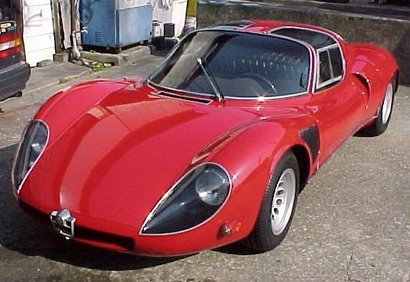
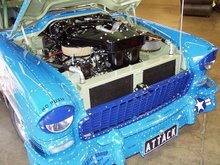
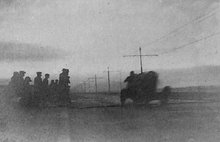

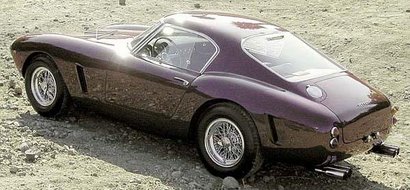
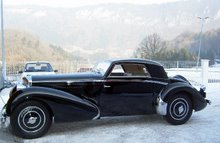
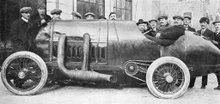


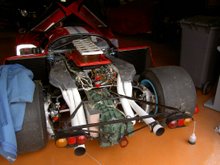

15 comments:
Paul, excellent! I know you spent a long time trying to develop a superior exhaust after a lot of research and experimentation and with success. An interesting topic, just need to someone in the UK to make a batch more for the rest of us! Neil
Thanks Neil.
It was a pity that we never recovered the pattern.
Better contact Justin and twist his arm - hard!
Paul, will the requirements differ between the 1200 and 1300s compaired to the 1600cc engines? I can believe that to maintain high gas velocity in the tubes the tube diameter for the smaller engines with less exhaustgasses to dispose could be smaller. To my HF1200 I fitted a group 3 manifold which is basicly a stock manifold but with 34mm inside diameter. and a 52mm main pipe joining a single side exiting silencer. In my oppinion a manifold wich requires removal of the cilinderhead is a little bit to much. There must be a convenient split possible somewere. Maybe when using a split flange and motorcycle joints with springs. I would love to try and build one but the fabrication of a well designed manifold is possibly the most difficult part to make yourself.
Thanks again for the comment. A fair point: probably 34mm for a 1200 or 1300 would be fine. Remember that in an ideal world, apart from the capacity, other factors in exhaust manifold design include cam timing, bore/stroke ratio plus of course desired characteristics or application e.g. sprint, endurance, rally and so on. I used to have a couple of formulae for designing a basic manifold; one I know I have lost but I might be able to find the other. Above all I repeat: collectors are really essential for best results.
I hope you saw my responses to your other comments.
Hi Paul,
I live in Johannesburg (altitude 1753m above sea level) and would appreciate your comment on this. I knew an old Austrian engine builder, who has recently passed away, who maintained that because the air is thinner (approx 14%)
here the exhaust side of the engine wasn't that important - it was getting enought air/fuel in that was the challenge.
Would you consider it necessary to change the carburation to cater for this, and if so, what would I need to look at.
Many thanks
Stephen Archer
PS Your website is really great!
Hello Stephen and thanks for your comment.
1753 metres is a lot nearly 6000'... In theory your car would run rich at that altitude since there is less air. In your position, I would try smaller main jets and/or larger air correctors. Given the shortage of Solex parts you would probably have to solder them up and re-drill them, and then test on a rolling road - at that altitude of course! I am afraid I do not agree with your late expert; I insist that the Fulvia manifold is very poor, although I accept that of course he had experience that I am unlikely ever to have (operating at those altitudes). I live in a place at 800 metres and I thought that that was high!
Best
Paul
Stephen, thanks for your comment.
I disagree about the exhaust because the standard one is no good. As for the carbs, I would reduce both the main and air corrector jets to compensate for the thin air. I cannot offer any numbers as I simply have not had the experience of those altitudes. I live at 800 metres and I thought that that was high!
Paul
can you explane something about the errors in the first evo exhaust manifold shown on the picture. Will the clips have to be changed 180deg for clearance of for another reason?
Yes the clips have to be underneath rather than on top for access and clearance (as per the prototype). I have a collection of pictures showing some of the problems. Email me in a couple of weeks when I will be back in France and I'll send them to you
Hi paul,
I am currently doing a complete nut and bolt restoration of an s1 1.3s rallye. I have an original manifold which is badly rusted and after reading your post i am even more reluctant to use it. I would liek to attempt to build a 'custom' exhaust system much like the evolution exhaust featured in your post. Are the lengths you mentioned for the primaries and the second sections suitable for a 1300 as oppossed to a 1600. Secondly i see that in an earlier comment you concur with william on the 34mm and 52mm bore on the different pipe sections respectively. Would this be fine? and using a 4-2-1 design much like your evoluction exhaust, what diameter would you suggest for the middle (second) section? Finally, what does the term "tuned-length" to which you refer mean? Please excuse my ignorance on the subject, i would greatly appreciate any advice you have to offer, especially more detailed pictures, patterns or measurements.
On another note, i recently bought what appears to be a fulvia manifold but it is quite unlike any i have seen, perhaps you could shed some light on it. It seems to be made from cast iron and is very heavy and despite the surface rust and pitting i can make out the number 818.000 which i beleive is the fulvia sedan. The diameter of the pipes is also quite a bit smaller than those of my "original" manifold...
Hi paul,
I am currently doing a complete nut and bolt restoration of an s1 1.3s rallye. I have an original manifold which is badly rusted and after reading your post i am even more reluctant to use it. I would liek to attempt to build a 'custom' exhaust system much like the evolution exhaust featured in your post. Are the lengths you mentioned for the primaries and the second sections suitable for a 1300 as oppossed to a 1600. Secondly i see that in an earlier comment you concur with william on the 34mm and 52mm bore on the different pipe sections respectively. Would this be fine? and using a 4-2-1 design much like your evoluction exhaust, what diameter would you suggest for the middle (second) section? Finally, what does the term "tuned-length" to which you refer mean? Please excuse my ignorance on the subject, i would greatly appreciate any advice you have to offer, especially more detailed pictures, patterns or measurements.
On another note, i recently bought what appears to be a fulvia manifold but it is quite unlike any i have seen, perhaps you could shed some light on it. It seems to be made from cast iron and is very heavy and despite the surface rust and pitting i can make out the number 818.000 which i beleive is the fulvia sedan. The diameter of the pipes is also quite a bit smaller than those of my "original" manifold...
Hello again.
For most use a 4/2/1 manifold is the best choice, giving a wider spread of usable power.
For a 1300, depending on its state of development, I would say that there is no need to go above 34mm bore tube for the primaries. Indeed it is possible that a 32mm bore, carefully designed could give results. For the secondaries (the two pipes) I would suggest 35mm for 32mm promaries and 38mm for the 34mm promaries. The final pipe would probably be 50mm for both types. Collectors are very important: cut off the pipes straight at the entry to the collector which should be constructed with an included angle of 14 degrees.
Tuned length refers to the overall length from the head of the exhaust valve to the single pipe. For a Fulvia this would be in the region of 30". For a 4/2/1 varying the proportion between the primaries and the scondaries can be interesting. I like long primaries and short secondaries, but this can be difficult to arrange with the limited space available. The tuned length can be calcultaed. Factors include: revs for maximum power, exhaust cam timing, bore/stroke ratio and of course capacity. 30" is good!
Best of luck
Paul
I like the idea of exchaging some of the primary length to the secondary section, if this would enable easier installation without compromising performance.
I like the idea of exchanging some of the primary length to the secondary section, if this would enable easier installation without compromising performance.
I suspect that were you to do this you could well improve mid-range power; lengthening the primaries relative to the secondaries, whilst retaining the original tuned length (as with your current installation) should in theory make the system "lean" more towards 4-into- 1 characteristics - I would guess!
Post a Comment